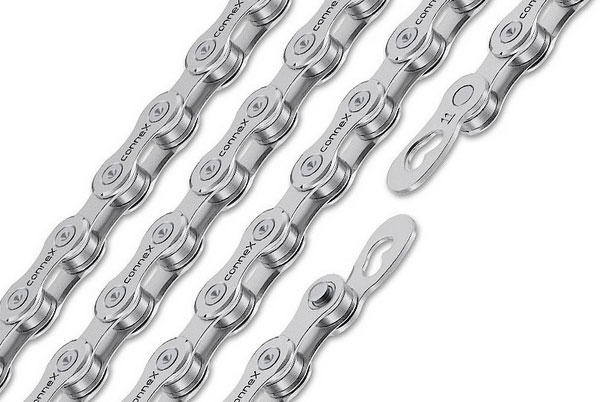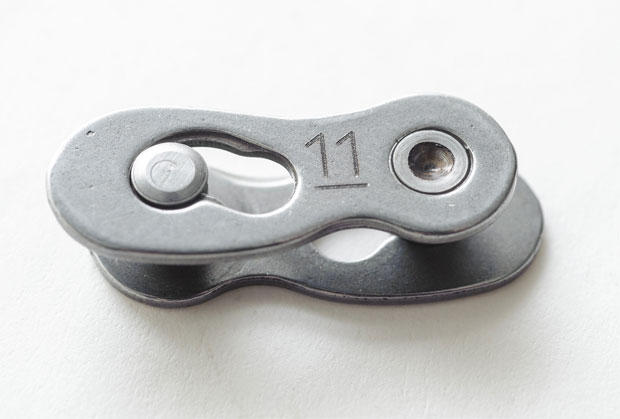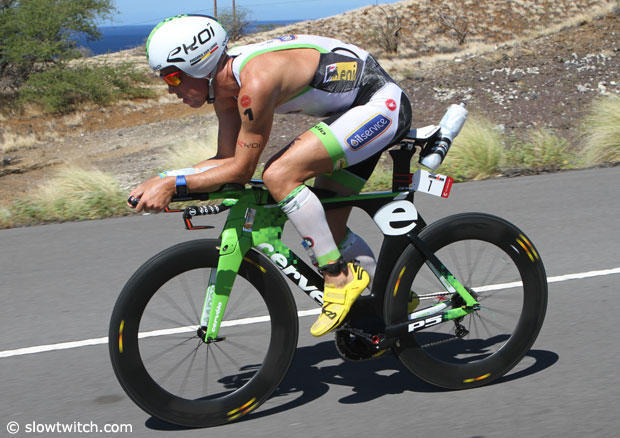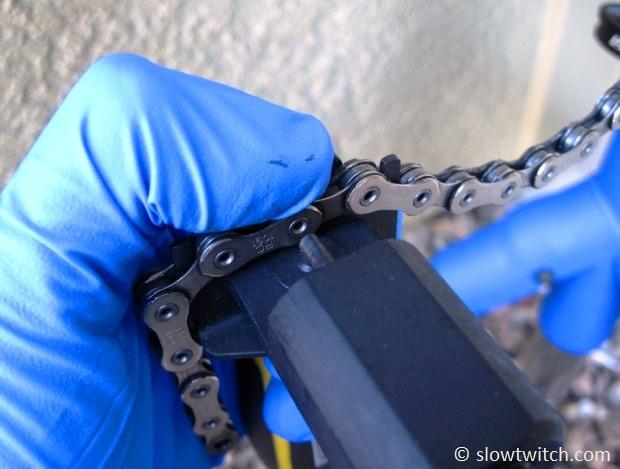Wippermann’s 11sp Chain
I've always been a Wippermann fan and I'm riding around right now on a Speed Concept with electronic shifting (Shimano Di2 11-speed Dura Ace) with a new Wippermann 11sO chain on it. This is Wippermann's midrange 11-speed chain. I find it the equal of Shimano's own Dura Ace chain in shifting, and there is no bigger test for a chain's ability to work on an electronic 11-speed system than a tri bike, because of that bike's short chain stay (usually 39.5cm to 40.5cm, which is 1cm to 3cm shorter than typical on road race bikes).
If a Wippermann, or any other aftermarket chain, is equal to but no better than Shimano's chains or, for that matter, SRAM's or Campagnolo's chains, why buy them once your OE chain wears out? Good question.

The key to the benefit of this chain is its link. It's called the Connex Link and other chains have similar links. SRAM's chain has a link and the benefit of SRAM's link, and chain, is that you can't put it on backwards. The unsuspecting rider is capable of mounting Wipperman's hardware backwards, so, well, don't do that. Read the instructions when you put the chain on.
The nice thing about Wippermann is that its link is very easy to disassemble. It's link is made to be used multiple times, rather than the typical one-use links from other companies. Why is this important?
You must couple this with another piece of information. Jordan Rapp has written in LAVA Magazine about drive train friction. Is there a savings to be had through ceramic bearings, special oils, special chain, cog and chain ring treatments? Now we're getting into nordic ski wax territory, but in fact you can realize the magic 10w advantage if you leverage what's available to you, and doing so isn't expensive. But like ski wax, it's shrouded in an atmosphere of alchemy. We move to the specific witchery of friction experts like Friction Facts' Jason Smith.

Jason is closer to solving the black art of drivetrain friction reduction than anybody, but those who want to avail themselves of every last watt need to physically remove the chain from the bike, multiple times over the life of the chain. If you use a Shimano link, this means putting a new pin in every time you do this. To me, it's kind of like riding around with a tube that's been patched multiple times. You might say this isn't fair, that absent user error the Shimano pin makes a link just as strong as any other link. Agreed. But I'm a user. And I err.
Jason's magic chain prep is for another time, but Jason feels as I do about the Connex Link: "I use Connex Links in the lab for chain testing; the link makes it quick and easy to remove and install chains on the equipment, regardless of the type of chain I am testing."
This brings up a fair point, which is that the Connex Link made by Wippermann is compatible with a lot of chains. Many people ride this link with their Shimano and SRAM chains. Jason simply uses the Connex Link when he tests these other chains. Why, then, use the Wippermann chain? Why not just the link?
You could.
Here's a link to an article on chains and friction which you'll find on Red Kite Prayer (a site I admire). The author writes, "According to Friction Facts, the standard Wippermann Connex 10s1 chain, Wippermann's lightest chain, a chain I've run on my bike many times, has 8.85 watts of drag straight out of the box when the five samples tested at 250w were averaged. In the tests, the 10s1 also showed the least variation from chain-to-chain."
One thing I note from this article is what I take to be a regularity in manufacturing, which gives me some comfort in the process of manufacturing. The second is the phrase, "a chain I've run on my bike many times." Lennard Zinn wrote a similar article for VeloNews and referred to, "a Wippermann Connex 10sX stainless steel chain that I keep as a spare in my travel bike case." If you read these articles by the grizzled vets of bike tech, you'll see "Wippermann" showing up over and over as the default chain.
It's a company that's been making chains since the 1800s. It doesn't make derailleurs, cranks, brakes, etc. It just makes chains, and when you take the elevator from the 8th floor of the host hotel with your bike standing up on its back wheel, ready to wheel it out to the transition area, it's very possibly a Wippermann chain moving that elevator car from your floor the lobby. Maybe that's why so many of my contemporaries run Wippermann chains.
You can buy Wippermann chains and links from your LBS or from Cantitoe Road, and for those who want to know more about what Friction Facts does and offers.



